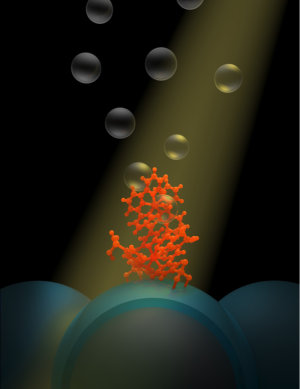 |
| Reviews and Templates for Expression We |
Researchers Harness Sun's Energy During Day for Use at Night

Jan. 14, 2014 — Solar energy has long been used as a clean alternative to fossil fuels such as coal and oil, but it could only be harnessed during the day when the sun's rays were strongest. Now researchers led by Tom Meyer at the Energy Frontier Research Center at the University of North Carolina at Chapel Hill have built a system that converts the sun's energy not into electricity but hydrogen fuel and stores it for later use, allowing us to power our devices long after the sun goes down.
"So called 'solar fuels' like hydrogen offer a solution to how to store energy for nighttime use by taking a cue from natural photosynthesis," said Meyer, Arey Distinguished Professor of Chemistry at UNC's College of Arts and Sciences. "Our new findings may provide a last major piece of a puzzle for a new way to store the sun's energy -- it could be a tipping point for a solar energy future."
In one hour, the sun puts out enough energy to power every vehicle, factory and device on the planet for an entire year. Solar panels can harness that energy to generate electricity during the day. But the problem with the sun is that it goes down at night -- and with it the ability to power our homes and cars. If solar energy is going to have a shot at being a clean source for powering the planet, scientists had to figure out how to store it for night-time use.
The new system designed by Meyer and colleagues at UNC and with Greg Parsons' group at North Carolina State University does exactly that. It is known as a dye-sensitized photoelectrosynthesis cell, or DSPEC, and it generates hydrogen fuel by using the sun's energy to split water into its component parts. After the split, hydrogen is sequestered and stored, while the byproduct, oxygen, is released into the air.
"But splitting water is extremely difficult to do," said Meyer. "You need to take four electrons away from two water molecules, transfer them somewhere else, and make hydrogen, and, once you have done that, keep the hydrogen and oxygen separated. How to design molecules capable of doing that is a really big challenge that we've begun to overcome."
Meyer had been investigating DSPECs for years at the Energy Frontier Research Center at UNC and before. His design has two basic components: a molecule and a nanoparticle. The molecule, called a chromophore-catalyst assembly, absorbs sunlight and then kick starts the catalyst to rip electrons away from water. The nanoparticle, to which thousands of chromophore-catalyst assemblies are tethered, is part of a film of nanoparticles that shuttles the electrons away to make the hydrogen fuel.
However, even with the best of attempts, the system always crashed because either the chromophore-catalyst assembly kept breaking away from the nanoparticles or because the electrons couldn't be shuttled away quickly enough to make hydrogen.
To solve both of these problems, Meyer turned to the Parsons group to use a technique that coated the nanoparticle, atom by atom, with a thin layer of a material called titanium dioxide. By using ultra-thin layers, the researchers found that the nanoparticle could carry away electrons far more rapidly than before, with the freed electrons available to make hydrogen. They also figured out how to build a protective coating that keeps the chromophore-catalyst assembly tethered firmly to the nanoparticle, ensuring that the assembly stayed on the surface.
With electrons flowing freely through the nanoparticle and the tether stabilized, Meyer's new system can turn the sun's energy into fuel while needing almost no external power to operate and releasing no greenhouse gases. What's more, the infrastructure to install these sunlight-to-fuel converters is in sight based on existing technology. A next target is to use the same approach to reduce carbon dioxide, a greenhouse gas, to a carbon-based fuel such as formate or methanol.
"When you talk about powering a planet with energy stored in batteries, it's just not practical," said Meyer. "It turns out that the most energy dense way to store energy is in the chemical bonds of molecules. And that's what we did -- we found an answer through chemistry."
|
|
|
|
Copyright 2011 Energy and Technical Services Ltd. All Rights Reserved. Energyts.com |